Madhya Pradesh, the heart of India, is a beautiful state that is known for its rich culture, diverse wildlife, and stunning natural landscapes. The state is home to a vast array of birds, making it a popular destination for birdwatchers and nature lovers.
With its vast forested regions, wetlands, and grasslands, Madhya Pradesh provides abundant habitats for birds. There are over 500 species of birds found in the state. From resident birds to migratory species, bird enthusiasts can spot a range of birds here.
This article provides a comprehensive list of birds found in Madhya Pradesh, highlighting some of the unique and fascinating species that call this state home.
1. Lesser Whistling Duck
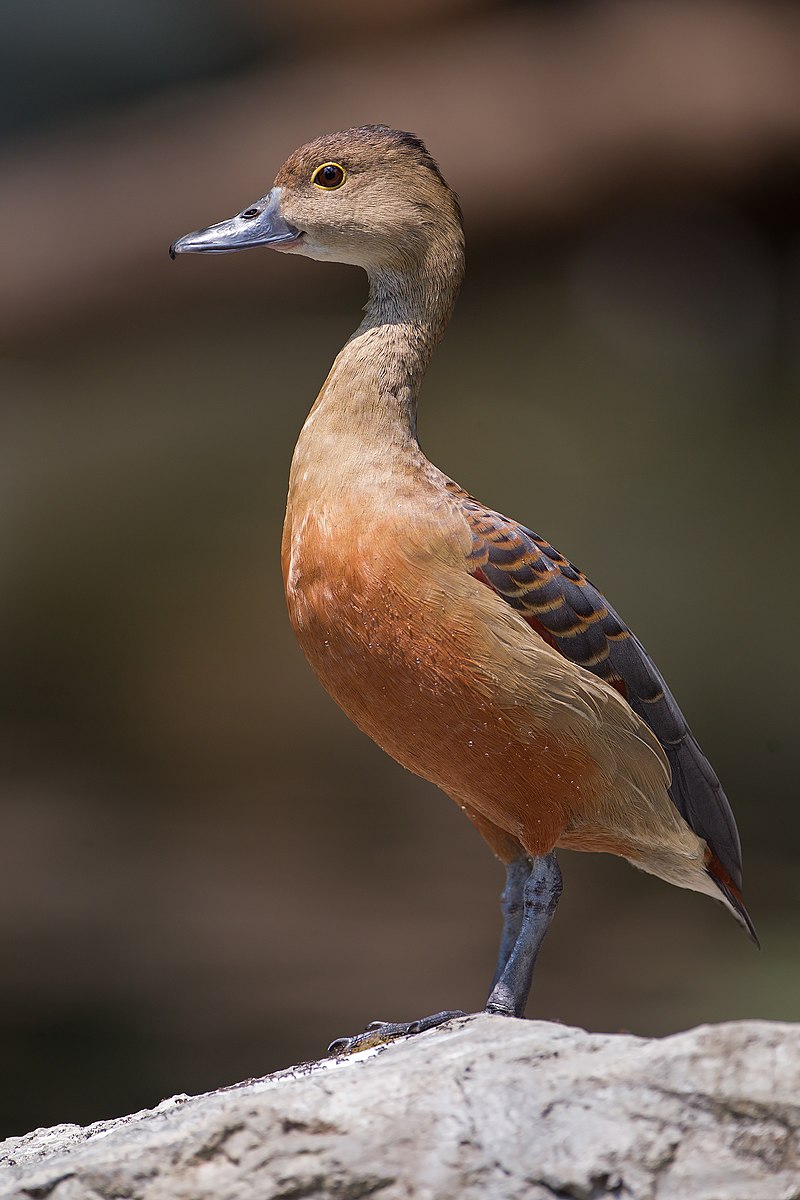
The Lesser Whistling Duck is a species of whistling duck found in the Indian subcontinent and Southeast Asia.
It has an unmistakable appearance, with its brown body, white-streaked wings and distinctive black tail feathers.
The adult ducks have red bills, eyes and legs with yellowish webbed feet for swimming.
They are generally nocturnal feeders but during the day they can be seen around lakes or wet paddy fields in flocks perching on trees or even building their nest inside tree hollows.
Their diet mainly consists of seeds from aquatic plants as well as small fish, mollusks and insects occasionally taken while wading or diving into water bodies to find food sources.
Scientific classification:
| Kingdom | Animalia |
| Phylum | Chordata |
| Class | Aves |
| Order | Anseriformes |
| Family | Anatidae |
| Genus | Dendrocygna |
| Species | D. javanica |
Also Featured In: Most Common Birds in China, Common Birds of Chhattisgarh
2. Indian Roller
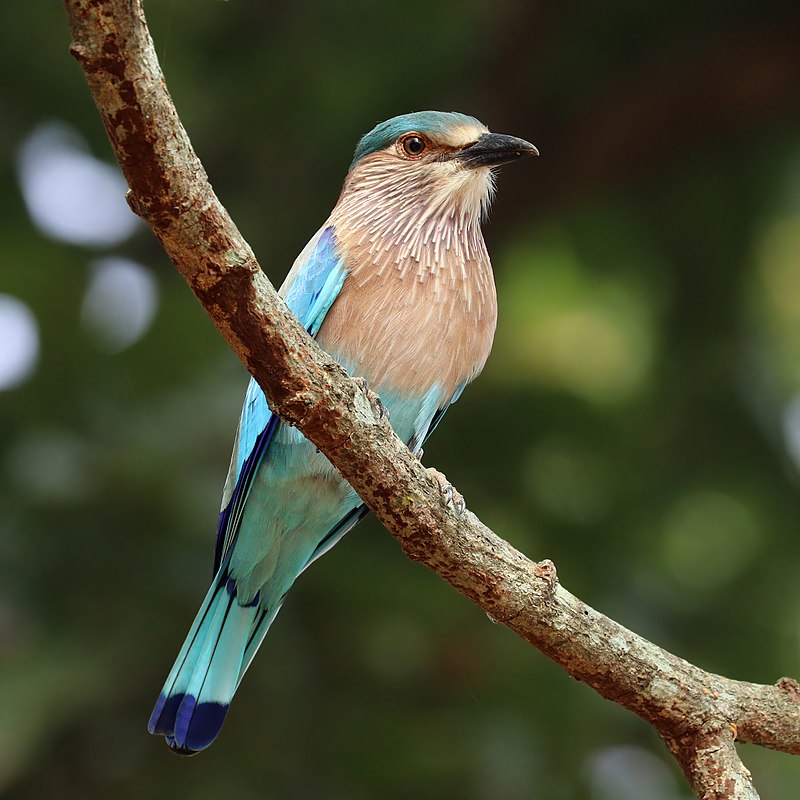
The Indian roller is a beautiful bird of the Coraciidae family. It has an average length of 12-13 inches and weighs 5.9 to 6.2 ounces with a wingspan of 26-29 inches.
Its face and throat are pinkish, while its head and back are brown with blue on its rump, light blue markings on one side of the wing, dark blue markings on other side making it easily distinguishable in flight.
Both male and female have same colouration but males tend to be slightly larger than females though they can only be differentiated when seen together closely due to similar colouring pattern between sexes.
The Indian Roller makes spectacular aerial dives from great heights during courtship display which attracts many viewers each year.
Scientific classification:
| Kingdom | Animalia |
| Phylum | Chordata |
| Class | Aves |
| Order | Coraciiformes |
| Family | Coraciidae |
| Genus | Coracias |
| Species | C. benghalensis |
Also Featured In: Common Birds in India, Birds that Live in Tamil Nadu
3. Greater Coucal
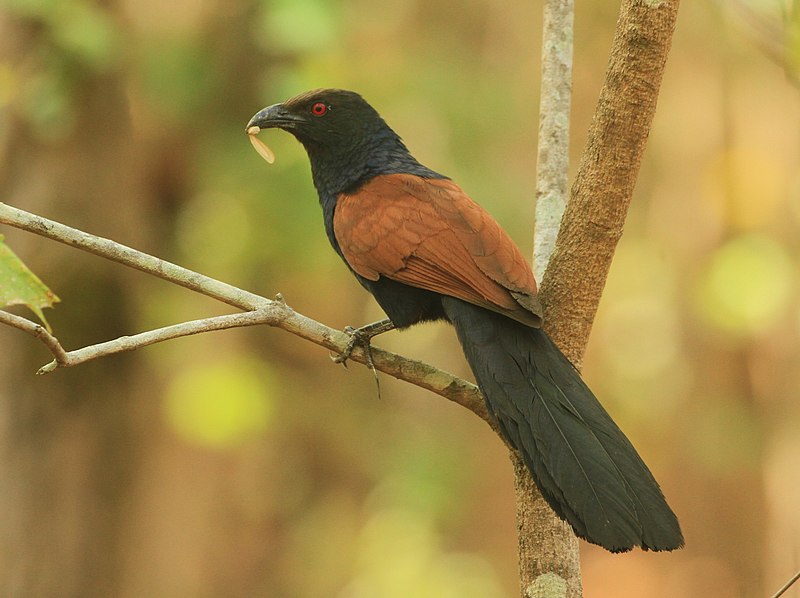
The Greater Coucal is a large, crow-like bird that belongs to the Cuculiformes order. It has a long tail and coppery brown wings.
These birds are found in many habitats across India and Southeast Asia, ranging from jungles to suburban gardens.
They feed on insects as well as small vertebrates such as frogs, lizards or snakes which they capture with their strong beak.
The males have glossy black plumage while females are dark brown above with buff underparts.
During breeding season these birds make loud croaking calls and can often be heard at night when they become active after sundown looking for food sources like termites or grasshoppers between bushes or low branches of trees close by water bodies like rivers, lakes etc.
This species plays an important role in maintaining ecological balance in its habitat by controlling pest populations through predation so it is essential that we protect them from hunting and other threats for future generations to enjoy.
Scientific classification:
| Kingdom | Animalia |
| Phylum | Chordata |
| Class | Aves |
| Order | Cuculiformes |
| Family | Cuculidae |
| Genus | Centropus |
| Species | C. sinensis |
Also Featured In: Hong Kong Birds You Need to See, Birds that Commonly Found in Andhra Pradesh
4. Painted Stork
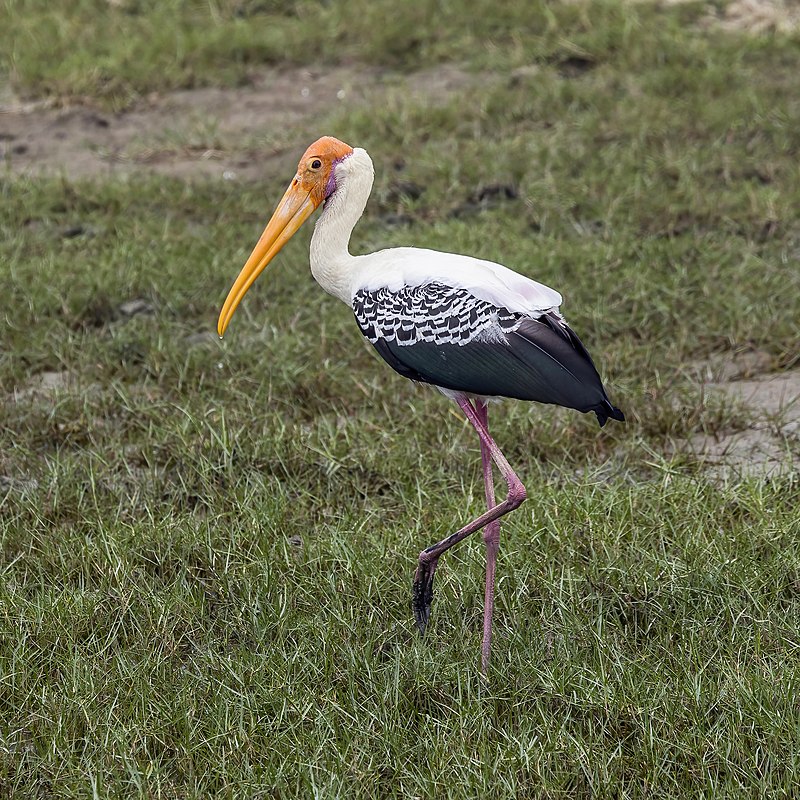
The Painted Stork is a large bird that belongs to the stork family. It has an impressive wingspan and can be found in tropical Asia, ranging from the Indian subcontinent all the way to Southeast Asia.
These birds are unique because of their pink tertial feathers, which gives them their name. They form flocks when they forage in shallow waters near rivers or lakes.
They dip their half-open beaks into water looking for food such as fish, frogs and other small aquatic creatures.
A distinctive feature of these birds is that during breeding season both males and females have red eyes with yellow rings around them.
This species also displays amazing cooperative behaviour when nesting; young storks help build nests by bringing material back to older ones who weave it together forming huge colonies on trees close to wetlands.
Scientific classification:
| Kingdom | Animalia |
| Phylum | Chordata |
| Class | Aves |
| Order | Ciconiiformes |
| Family | Ciconiidae |
| Genus | Mycteria |
| Species | M. leucocephala |
Also Featured In: Delhi Birds You Need to See, Big Birds that Live in Singapore
5. Red-Wattled Lapwing
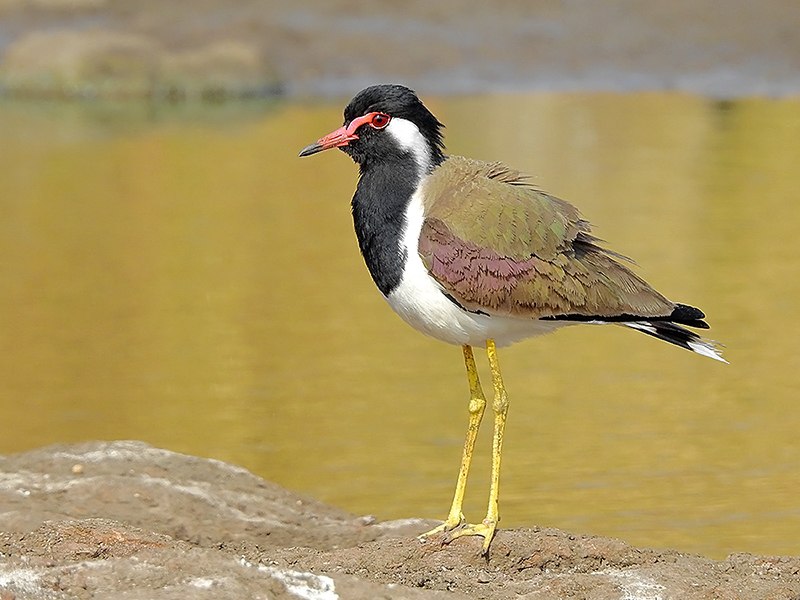
The Red-wattled Lapwing is an Asian bird belonging to the family Charadriidae. It has a distinctive loud call which led to it being nicknamed ‘did he do it’ by locals, due to its sound resembling the phrase.
These birds are usually found on open ground and cannot perch like other lapwings. They have black feathers with white wings, back and tail along with reddish wattles near their eyes that give them their name.
Red-wattled Lapwings feed mainly on insects but also eat some plant matter such as seeds or grains.
During breeding season they form strong pair bonds and make nests in shallow depressions of sand or soil lined with vegetation for incubating eggs during mating season before hatching out young chicks in around 25 days after laying eggs.
Scientific classification:
| Kingdom | Animalia |
| Phylum | Chordata |
| Class | Aves |
| Order | Charadriiformes |
| Family | Charadriidae |
| Genus | Vanellus |
| Species | V. indicus |
Also Featured In: Birds that Live in Uttar Pradesh, Birds of Konkan
6. Indian Cuckoo
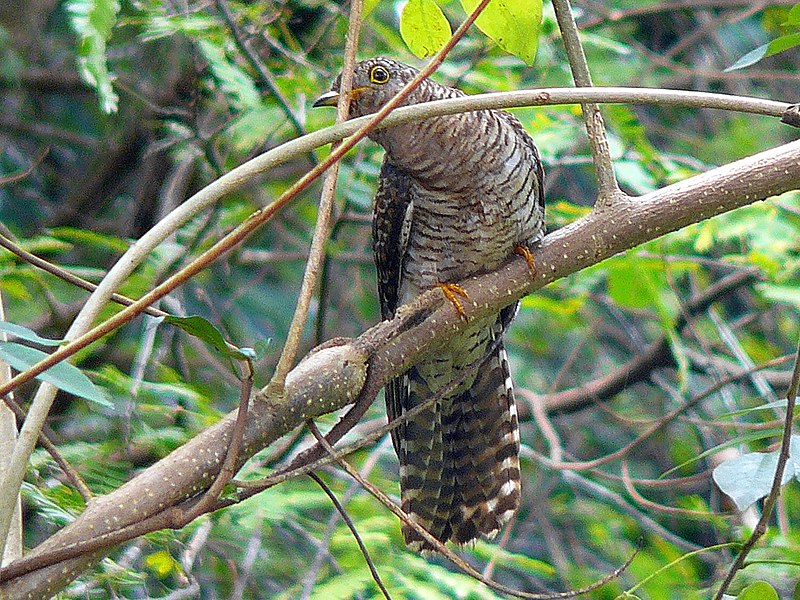
The Indian cuckoo is a beautiful bird belonging to the Cuculiformes family and found in the subcontinent of India and Southeast Asia.
It has an impressive range, stretching from India, Bangladesh, Bhutan and Sri Lanka all the way east to Indonesia, north to China and even Russia.
They usually live alone or in pairs at high altitudes up to 3,600m (11800ft), typically inhabiting woodlands or open forests.
This medium-sized cuckoo is quite shy but easily identified by its distinct white throat patch edged with black as well as its white belly with grey flanks.
Its call can also be heard throughout many parts of South Asia during mating season between April – June; it’s distinctive “coo-kook” sound bringing joyousness into any jungle atmosphere.
Scientific classification:
| Kingdom | Animalia |
| Phylum | Chordata |
| Class | Aves |
| Order | Cuculiformes |
| Family | Cuculidae |
| Genus | Cuculus |
| Species | C. micropterus |
7. Yellow-Footed Green Pigeon
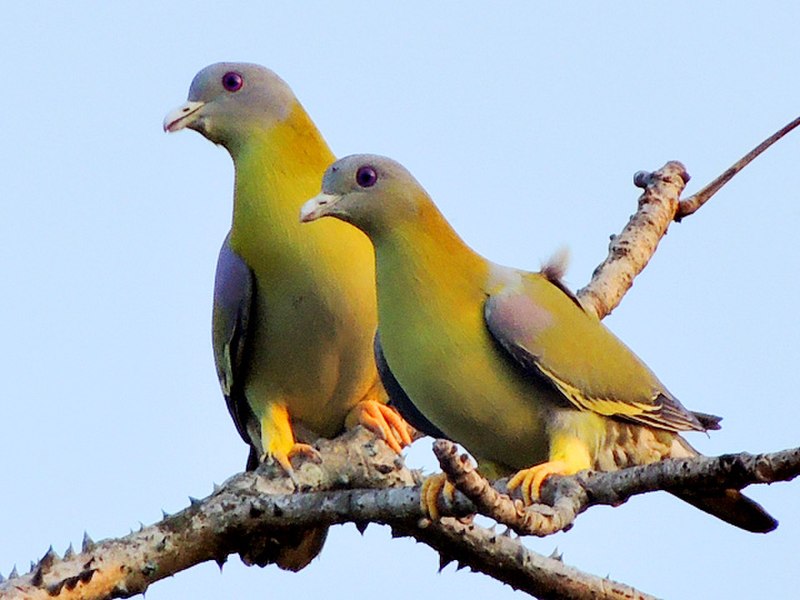
The Yellow-footed Green Pigeon is a common species of green pigeon found in the Indian subcontinent and parts of Southeast Asia. It has yellow feet and legs, with emerald green body plumage that stands out from its surroundings.
This vibrant bird is also the state bird of Maharashtra, where it’s called “Haroli” or “Hariyal”. Its diet consists mainly of fruit like Ficus racemosa, Terminalia arjuna, Syzygium cumini etc., which are important sources for wild animals.
With their impressive vocalizations and adaptability to different environments they have become popular among city dwellers as well.
The Yellow-footed Green Pigeon plays an important role in maintaining healthy ecosystems by providing food to other wildlife while dispersing seeds through defecation – helping propagate new plants across vast areas.
Scientific classification:
| Kingdom | Animalia |
| Phylum | Chordata |
| Class | Aves |
| Order | Columbiformes |
| Family | Columbidae |
| Genus | Treron |
| Species | T. phoenicopterus |
Also Featured In: Birds that You’ll Find in Kolkata, Most Common Birds of Ko Samui
8. Knob-Billed Duck
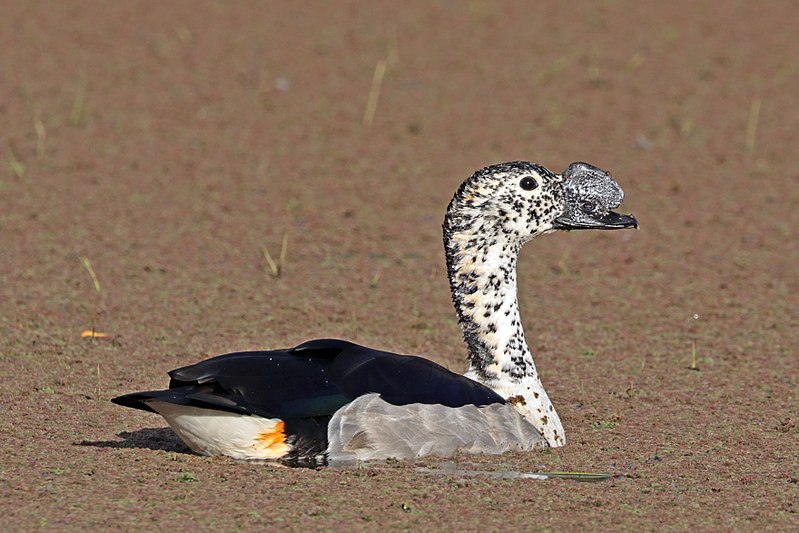
The Knob-billed Duck is a large duck found in tropical wetlands across Sub-Saharan Africa, Madagascar and the Indian Subcontinent.
They have distinctive knobbed bills which makes them easily recognizable amongst other duck species.
Their diet consists of small aquatic creatures such as crustaceans, mollusks, tadpoles and insects.
This bird prefers to nest near water sources like marshes or shallow lakes but can also make its home in flooded fields during the wet season.
The population of this species has declined due to habitat loss from urbanization and pollution caused by human activities.
Conservation efforts are underway to ensure their survival for future generations with protection offered at some national parks within their range countries.
Scientific classification:
| Kingdom | Animalia |
| Phylum | Chordata |
| Class | Aves |
| Order | Anseriformes |
| Family | Anatidae |
| Genus | Sarkidiornis |
| Species | S. melanotos |
9. Indian Vulture
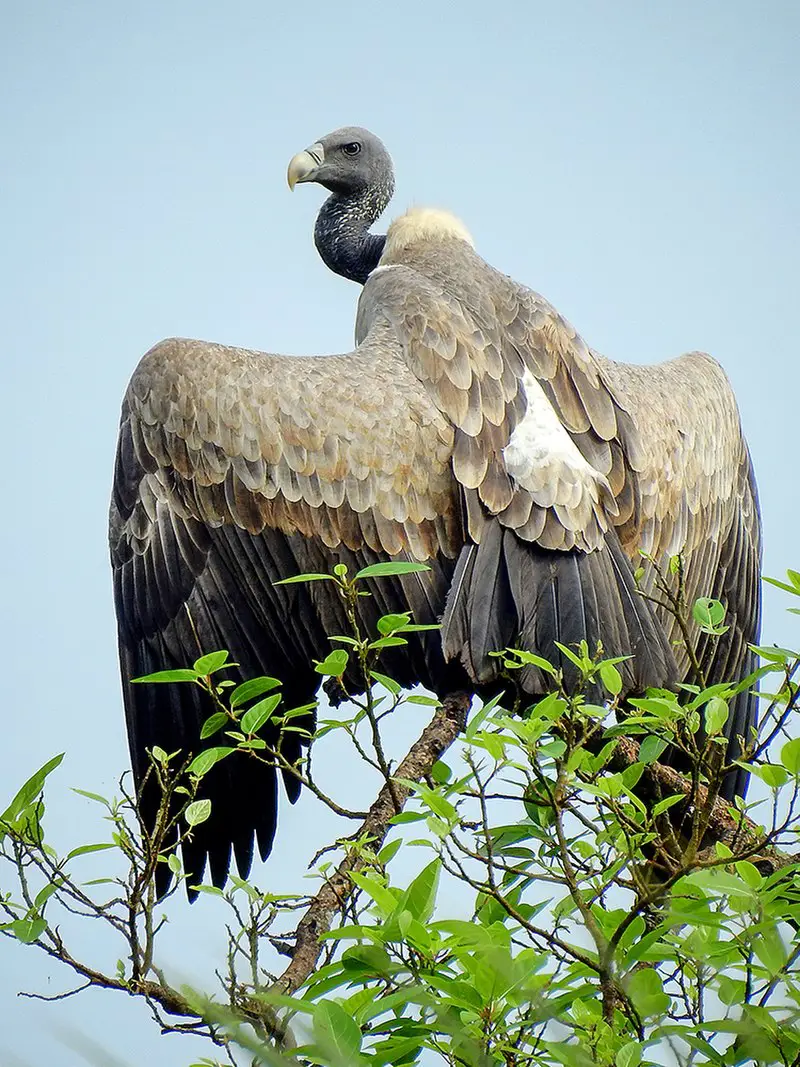
The Indian vulture is a large bird of prey found in India, Pakistan and Nepal. It has an old world appearance with its striking black plumage and white ruff around the neck.
Unfortunately it is Critically Endangered since 2002 due to drastic decline in population caused by diclofenac poisoning leading to kidney failure among these birds.
The species mainly nests on hilly crags across central and peninsular India making them vulnerable as they are unable to migrate away from their breeding grounds during harsh weather conditions or food scarcity.
In addition, their close relative Slender-billed Vultures (Gyps tenuirostris) also faces similar threats owing to same reasons further decreasing this species’ numbers even more drastically over time unless conservation efforts are taken up soon.
Scientific classification:
| Kingdom | Animalia |
| Phylum | Chordata |
| Class | Aves |
| Order | Accipitriformes |
| Family | Accipitridae |
| Genus | Gyps |
| Species | G. indicus |
Also Featured In: Native Pakistani Birds,
10. Indian Paradise Flycatcher
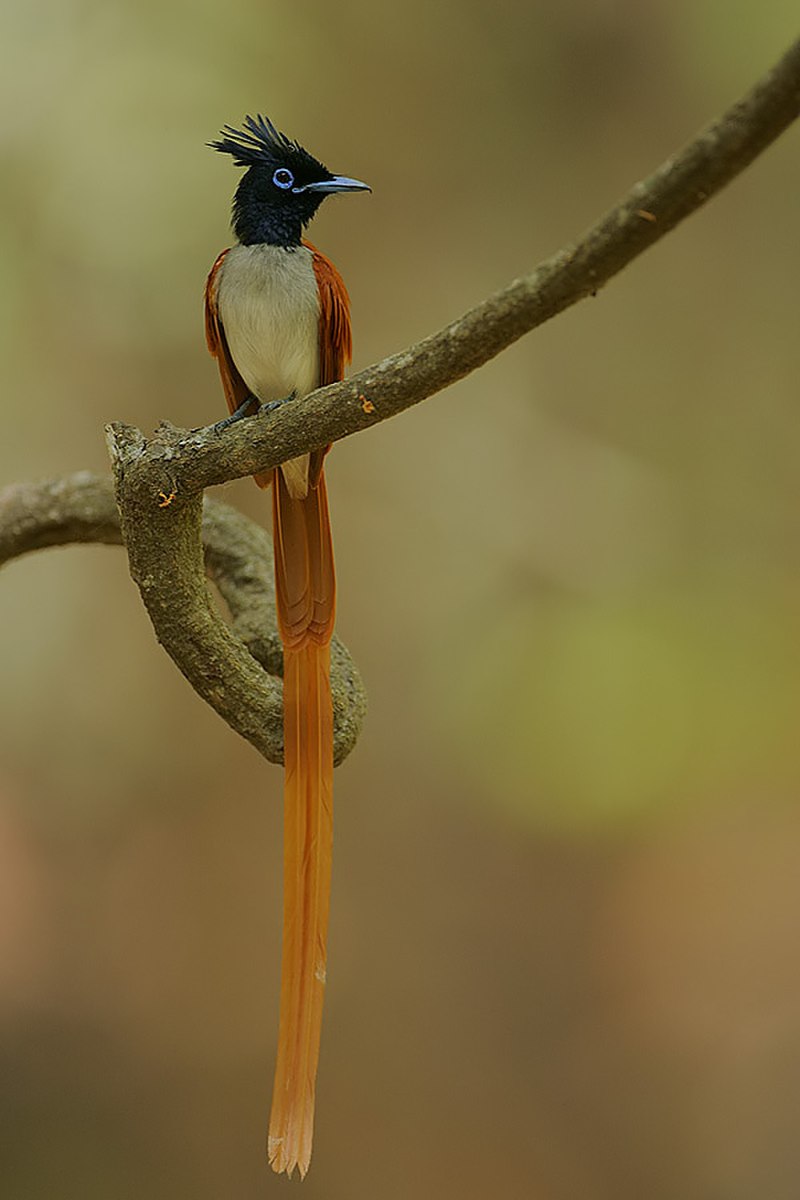
The Indian paradise flycatcher is a beautiful bird native to Asia. It has an overall black and rufous plumage, but the males have elongated central tail feathers that really stand out.
This species is considered stable globally, so it is listed as Least Concern on IUCN’s Red List of Threatened Species.
The range of this passerine extends from India in the South Asian subcontinent all the way up to Central Asia and Myanmar.
Despite its beauty, sadly these birds are also threatened by loss of habitat due to urbanization and deforestation caused by humans- we must do our best to protect them.
Scientific classification:
| Kingdom | Animalia |
| Phylum | Chordata |
| Class | Aves |
| Order | Passeriformes |
| Family | Monarchidae |
| Genus | Terpsiphone |
| Species | T. paradisi |
Also Featured In: Native Birds of Kazakhstan, Black And White Birds You Don’t Know About
11. Rufous Treepie
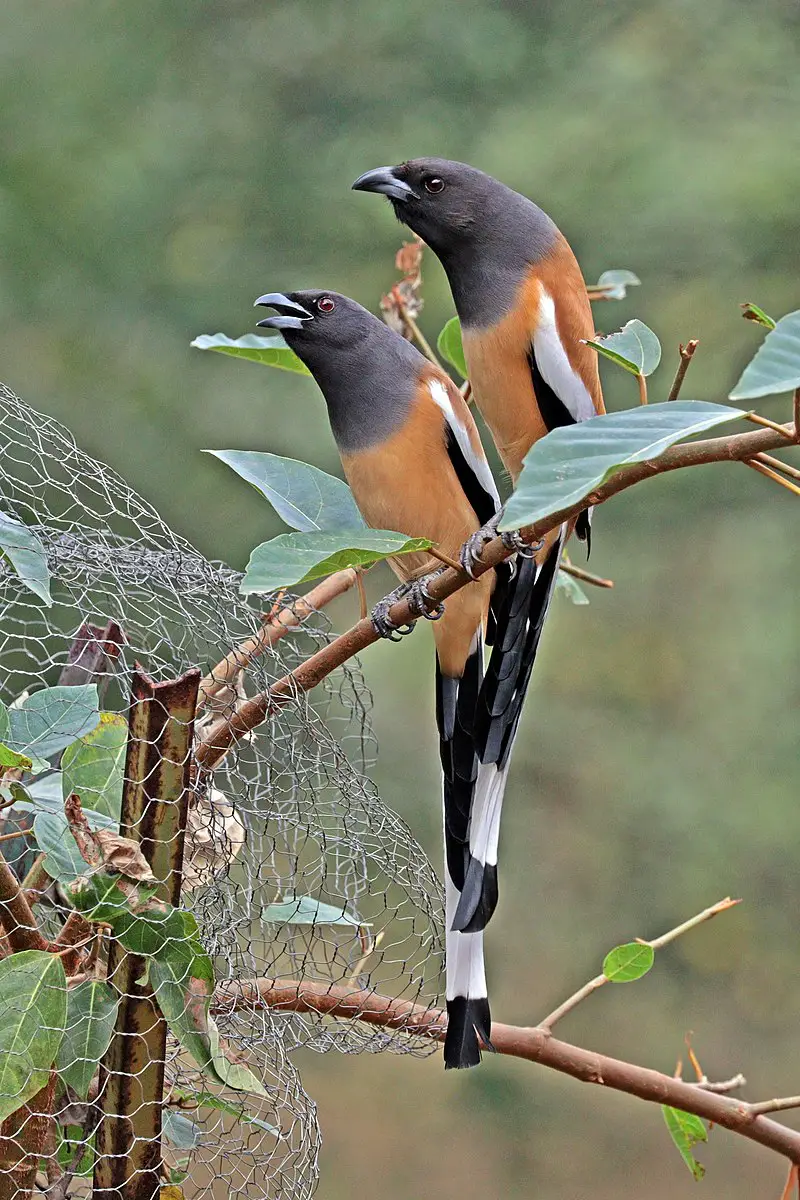
The Rufous Treepie is a member of the Corvidae family and native to the Indian Subcontinent, as well as parts of Southeast Asia. It has distinctive loud musical calls that make it easily recognizable.
This bird can be found in open scrub lands, agricultural areas, forests and even urban gardens due to its adaptability and omnivorous diet.
With its long tail feathers ranging from brown-black to greyish-brown on top with orange underneath; this species stands out among other birds.
They also have an interesting way of eating fruits: they peck at them while hovering midair. The Rufous Treepie is not only beautiful but also quite intelligent – their problem solving abilities are second only to those of primates.
Scientific classification:
| Kingdom | Animalia |
| Phylum | Chordata |
| Class | Aves |
| Order | Passeriformes |
| Family | Corvidae |
| Genus | Dendrocitta |
| Species | D. vagabunda |
Also Featured In: Most Common Birds of Bihar,
12. Asian Green Bee-Eater
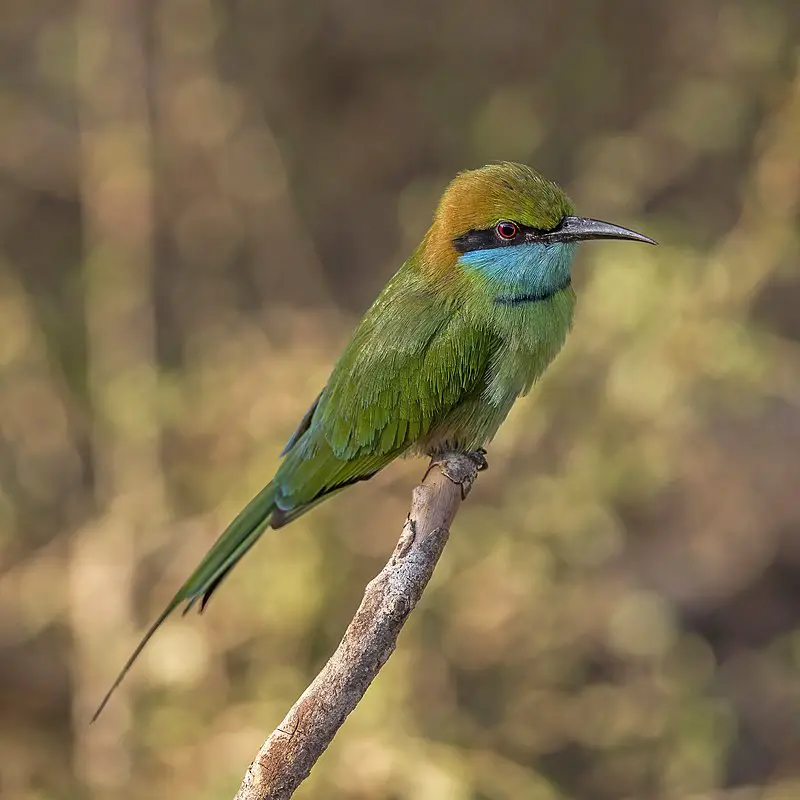
The Asian green bee-eater is a near passerine bird in the bee-eater family. It’s native to parts of Asia, stretching from Iran all the way over to Vietnam.
These birds are resident but tend to migrate seasonally and can also be found in Africa and Arabia.
They have bright green feathers on their upperparts with yellowish underparts, making them easy to spot when they’re flying around looking for insects like bees, wasps and dragonflies.
They usually nest burrows dug into sandy ground or riverbanks where they lay up to five eggs at once.
The Asian green bee-eater is an exciting species that has been popular among ornithologists since its discovery hundreds of years ago.
Scientific classification:
| Kingdom | Animalia |
| Phylum | Chordata |
| Class | Aves |
| Order | Coraciiformes |
| Family | Meropidae |
| Genus | Merops |
| Species | M. orientalis |
Also Featured In: Most Common Types of Bangladeshi Birds, Birds You’ll Find in Kanha National Park
13. River Lapwing
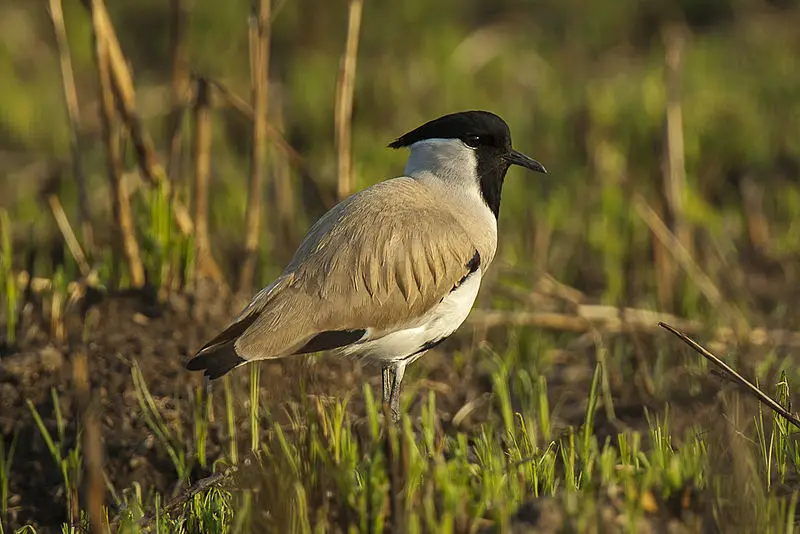
The River Lapwing is a striking black and white bird with long legs and an orange crest upon its head. It can be found throughout much of northern India as well as parts of Southeast Asia, including Vietnam.
This species rarely migrates and tends to stay in the same general area year-round.
The river lapwing has unique features that make it stand out from other birds, such as its bright yellow eyes, short bill, large wingspan for better flight stability, spur-like feathers on its inner wing joints which are used for protection against predators or rivals during mating season.
Despite being quite beautiful when seen up close, this species often goes unnoticed due to their small size; they typically measure between 25 – 28 cm long.
Scientific classification:
| Kingdom | Animalia |
| Phylum | Chordata |
| Class | Aves |
| Order | Charadriiformes |
| Family | Charadriidae |
| Genus | Vanellus |
| Species | V. duvaucelii |
Also Featured In: Birds of Myanmar, Birds that Live in Uttarakhand
14. Great Stone-Curlew
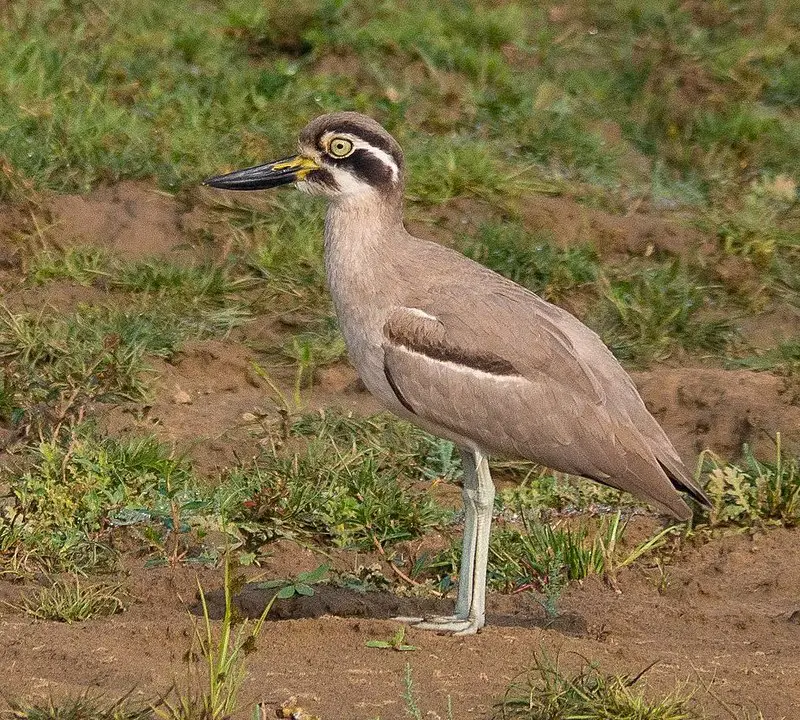
The Great Stone-Curlew, also known as the great thick-knee, is a large wader found in tropical southern Asia. It stands out with its long yellow legs and brownish plumage.
This bird was first described by French naturalist Georges Cuvier in 1829 who gave it the scientific name Oedicnemus recurvirostris, with Nepal being its type locality.
The species prefers to inhabit open country like steppes or grasslands where they hunt for prey on foot during night time while keeping watch from high perches during daybreak.
They are monogamous birds that breed between April – June and form strong pair bonds throughout their lifetime.
Scientific classification:
| Kingdom | Animalia |
| Phylum | Chordata |
| Class | Aves |
| Order | Charadriiformes |
| Family | Burhinidae |
| Genus | Esacus |
| Species | E. recurvirostris |
Also Featured In: Urban Birds of Hong Kong,
15. Black-Hooded Oriole
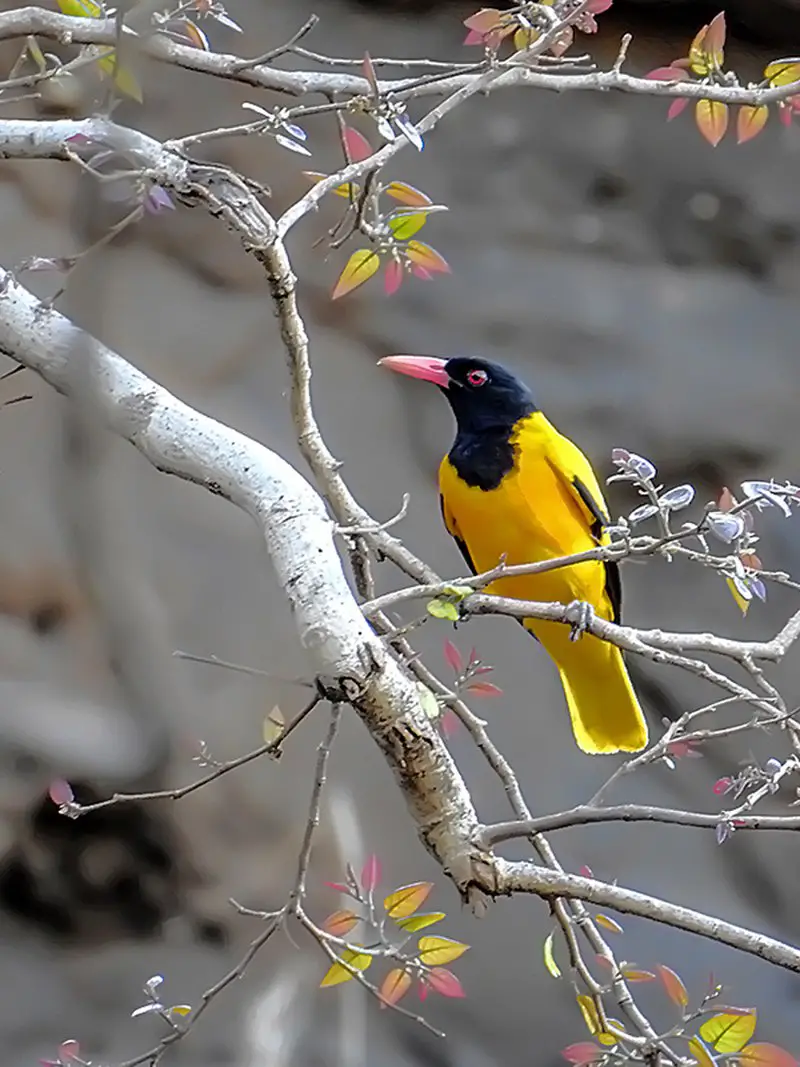
The Black-hooded Oriole is a beautiful and unique bird found in tropical southern Asia. It has black feathers on its head, giving it the name “black hooded”.
Its diet consists of insects, fruit, especially figs which can be found in the tree canopy where they spend most of their time. They build nests high up on trees to lay their eggs – usually two per nest.
The orioles are active during daybreak and nightfall when they search for food or mates. Their bright colors make them noticeable even from afar making them an interesting sight for any nature lover with a keen eye.
Scientific classification:
| Kingdom | Animalia |
| Phylum | Chordata |
| Class | Aves |
| Order | Passeriformes |
| Family | Oriolidae |
| Genus | Oriolus |
| Species | O. xanthornus |
Also Featured In: Common Birds Found in Nepal, Birds that You’ll Find in Kruger national park
16. Malabar Pied Hornbill
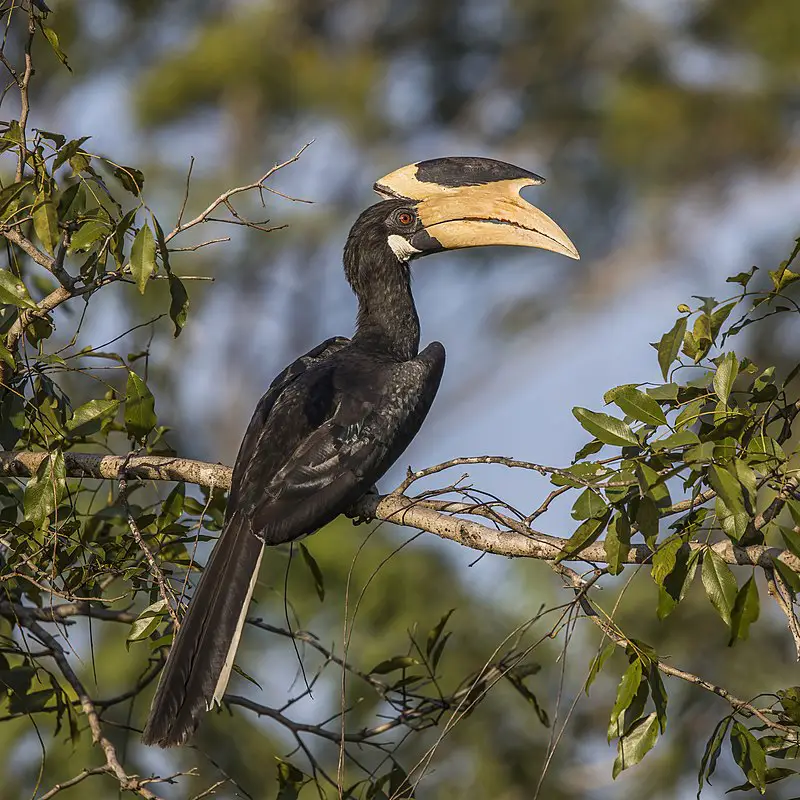
The Malabar pied hornbill is an incredible bird found in the Old World. It has a unique appearance due to its black and white colouration, with a large yellow beak that curves downwards at the tip.
This species was first described by Georges-Louis Leclerc, Comte de Buffon in 1780 and illustrated in his Histoire Naturelle des Oiseaux book.
The diet of this bird consists mainly of fruit, small reptiles and insects which they catch while flying through trees or on the ground during their daily activities.
They have been known to form monogamous bonds within pairs over long periods of time as well as being highly social creatures living together in flocks for protection against predators such as snakes and raptors.
Overall, these birds are fascinating creatures with amazing adaptations that allow them to survive even under difficult environmental conditions.
Scientific classification:
| Kingdom | Animalia |
| Phylum | Chordata |
| Class | Aves |
| Order | Bucerotiformes |
| Family | Bucerotidae |
| Genus | Anthracoceros |
| Species | A. coronatus |
Also Featured In: Birds in Sri Lanka,
17. Woolly-Necked Stork
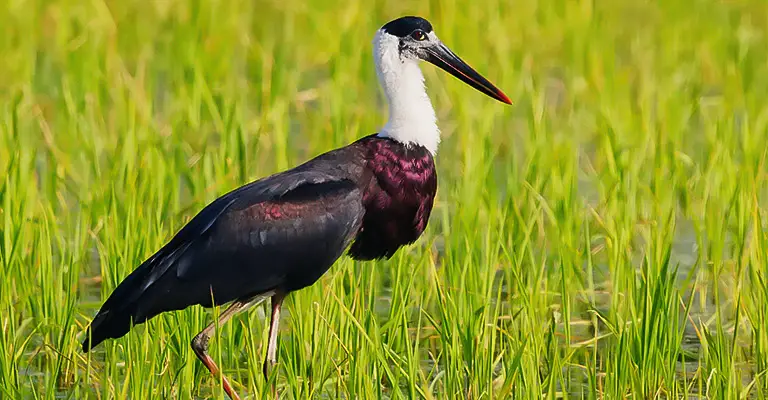
The woolly-necked stork, also known as the Asian woollyneck, belongs to the stork family and is a large wading bird.
It can be found in various habitats including forests, wetlands, and agricultural areas throughout Asia.
This bird typically breeds alone or in small groups. It is known for its long and beautiful feathers that appear woolly in texture around its neck.
The woolly-necked stork was first described by Georges-Louis Leclerc, a French polymath.
It is an important species for its role in maintaining the ecological balance within its habitat.
While their numbers may vary across different regions, these unique birds have come to be appreciated and admired by many.
Scientific classification:
| Kingdom | Animalia |
| Phylum | Chordata |
| Class | Aves |
| Order | Ciconiiformes |
| Family | Ciconiidae |
| Genus | Ciconia |
| Species | C. episcopus |
Also Featured In: Birds of Goa, Birds that Commonly Found in Bali
18. Spotted Owlet
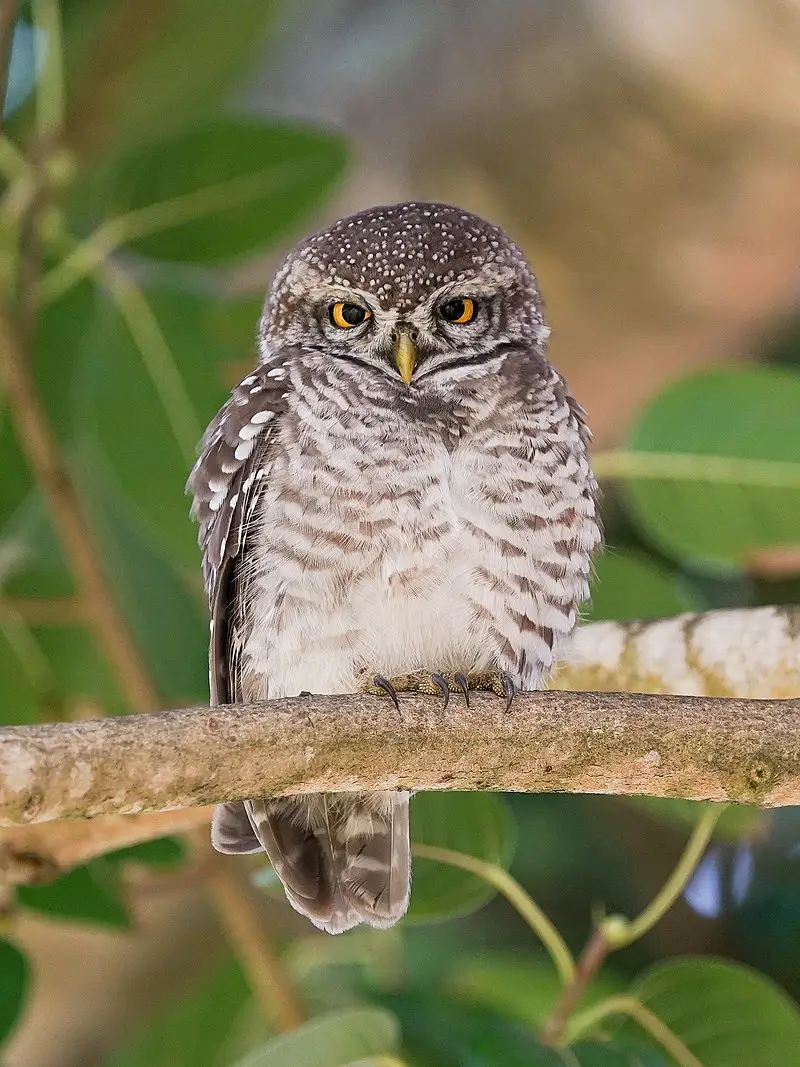
The Spotted owlet, also known as Athene brama, is a small bird species found in tropical Asia, from mainland India to Southeast Asia. It is a common resident of open habitats, including farmland and human habitation.
This bird has adapted well to living in urban areas and can be found roosting in small groups in cavities of trees, rocks or buildings.
They typically nest in holes in trees or buildings and lay 3-5 eggs. The Spotted owlet has shown great adaptability to changing environments and has learned to coexist with humans in urban settings.
This bird is known for its distinctive spotted appearance and has become a well-loved sight in many parts of Asia.
Scientific classification:
| Kingdom | Animalia |
| Phylum | Chordata |
| Class | Aves |
| Order | Strigiformes |
| Family | Strigidae |
| Genus | Athene |
| Species | A. brama |
Also Featured In: Birds That Live in the Jungle, Common Birds that Live in Odisha
19. Ashy-Crowned Sparrow-Lark

The Ashy-crowned sparrow-lark is a small bird that belongs to the lark family. It is commonly found in open lands across South Asia where there is bare ground, grass, and scrub.
During the breeding season, males are easily recognizable by their distinct black-and-white face pattern, while females have a sandy brown color that resembles a female sparrow.
Despite their small size, these birds are very active and can be seen flying and hopping around frequently.
They are known for their beautiful singing voice, which is often heard during the mating season.
The Ashy-crowned sparrow-lark is an important part of the natural ecosystem and plays a crucial role in maintaining the balance of the food chain.
Scientific classification:
| Kingdom | Animalia |
| Phylum | Chordata |
| Class | Aves |
| Order | Passeriformes |
| Family | Alaudidae |
| Genus | Eremopterix |
| Species | E. griseus |
Also Featured In: Gujarati Birds, Birds that Live in Rajasthan
20. River Tern
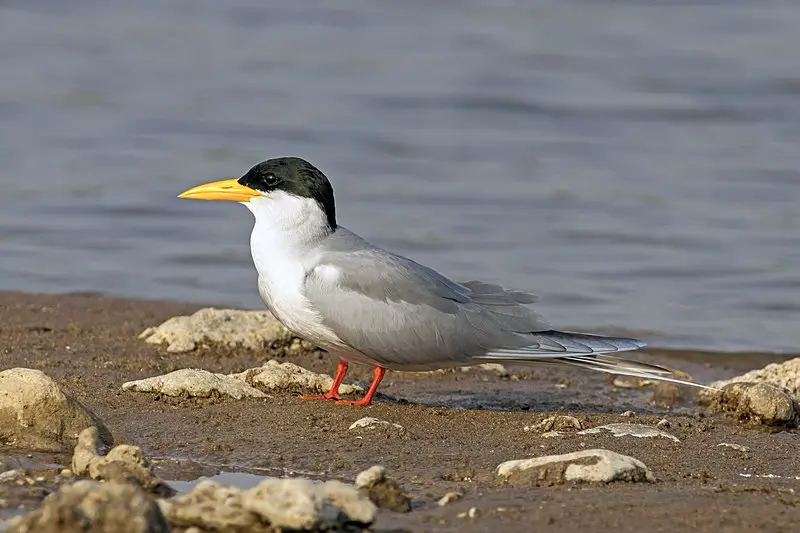
The River tern bird, scientifically known as Sterna aurantia, is a member of the Laridae family. It resides along inland rivers in the Indian Subcontinent, Iran, and eastern Myanmar to Thailand.
This bird is uncommon in Thailand. It is known for living almost exclusively in freshwater, contrary to other species in the same family.
Usually quiet when away from breeding grounds, River terns become vocal during their breeding period, which ranges from March to May.
The River terns build their nests in colonies.
Scientific classification:
| Kingdom | Animalia |
| Phylum | Chordata |
| Class | Aves |
| Order | Charadriiformes |
| Family | Laridae |
| Genus | Sterna |
| Species | S. aurantia |
Also Featured In: Birds of Karnataka, Common Birds in Bangalore
21. Indian Pitta
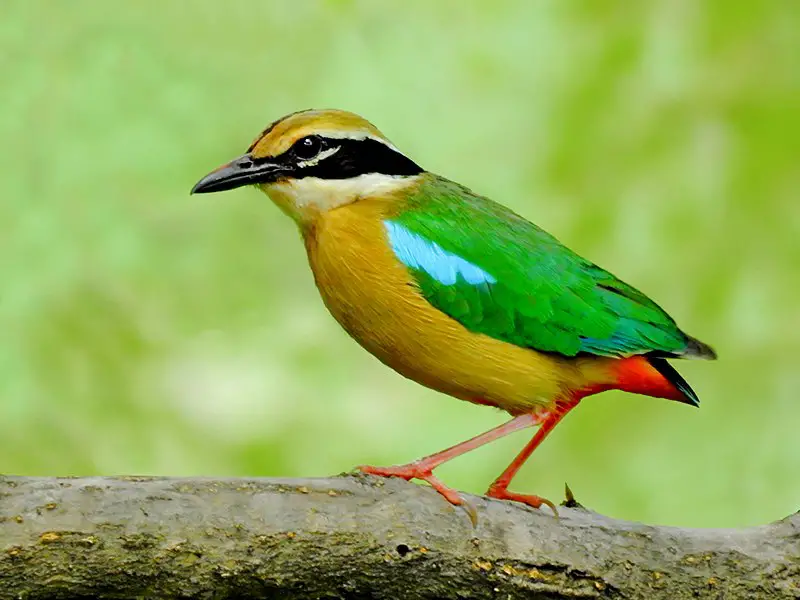
The Indian pitta bird is a beautiful passerine species found in the Indian subcontinent. It prefers to inhabit scrub jungle, deciduous, and dense evergreen forests.
During breeding season, it can be found in the forests of the Himalayas, hills of central and western India. However, it migrates to other parts of the peninsula during winter.
Despite its striking colors, the Indian pitta is quite shy and usually stays hidden in the undergrowth. It feeds on insects found in the forest floor.
This bird is an important part of the local ecosystems it inhabits and adds to the beauty and diversity of the region.
Scientific classification:
| Kingdom | Animalia |
| Phylum | Chordata |
| Class | Aves |
| Order | Passeriformes |
| Family | Pittidae |
| Genus | Pitta |
| Species | P. brachyura |
Also Featured In: Common Birds in Kerala, Birds that Migrate to Sri Lankan
22. Grey-Headed Fish Eagle
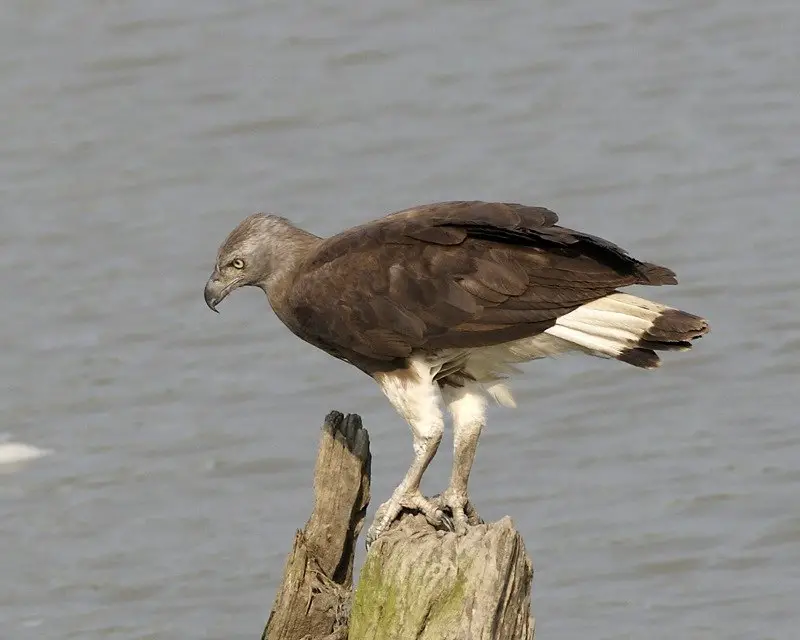
The Grey-headed fish eagle is a bird of prey found in South East Asia. It is a robust, large raptor with a dark brown upper body, grey head, and a lighter underbelly with white legs.
Juveniles are paler in coloration and have darker streaking. Often confused with the lesser fish eagle and Pallas’s fish eagle, this majestic bird primarily feeds on fish. Their diet consists of fresh and saltwater fish, amphibians, and crustaceans.
They are well adapted to hunting over water, with sharp talons to snatch prey and excellent eyesight.
This bird of prey plays a crucial role in the maintenance of aquatic ecosystems by preventing overgrowth of fish populations.
The Grey-headed fish eagle is a magnificent and impressive bird with predatory skills that make it a fearsome hunter.
Scientific classification:
| Kingdom | Animalia |
| Phylum | Chordata |
| Class | Aves |
| Order | Accipitriformes |
| Family | Accipitridae |
| Genus | Haliaeetus |
| Species | H. ichthyaetus |
Also Featured In: Birds That You’ll See in Kaziranga National Park,
23. Savanna Nightjar
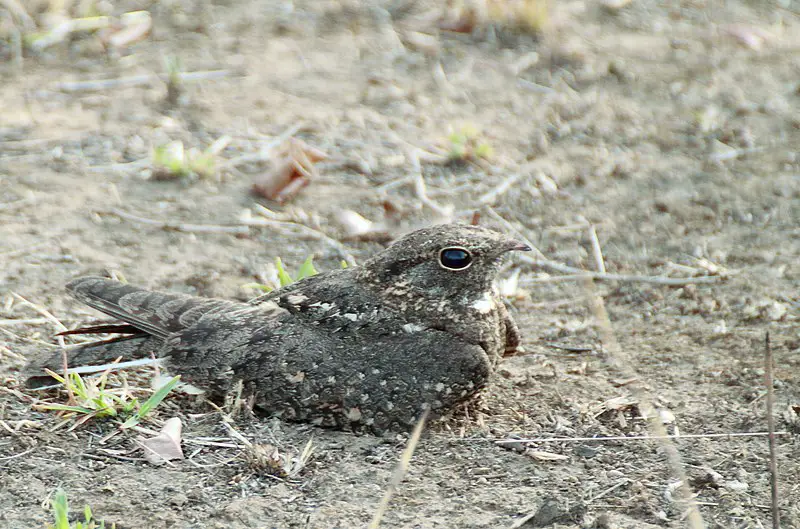
The savanna nightjar, also known as the allied nightjar or Franklin’s nightjar, is a species of bird found in South and Southeast Asia. This nocturnal bird inhabits open forests and scrub areas.
It is known to have eight subspecies, including monticolus, amoyensis, and stictomus. The savanna nightjar is of medium length and has distinct features such as a broad bill and a well-camouflaged plumage.
It is also known for its unique vocalization during the night. This bird’s survival depends on the conservation of its natural habitat, and efforts for this are underway.
Hence, the savanna nightjar is a fascinating and significant species in the avian world.
Scientific classification:
| Kingdom | Animalia |
| Phylum | Chordata |
| Class | Aves |
| Clade | Strisores |
| Order | Caprimulgiformes |
| Family | Caprimulgidae |
| Genus | Caprimulgus |
| Species | C. affinis |
Also Featured In: Common Birds of Maharashtra, Birds of Andhra Pradesh